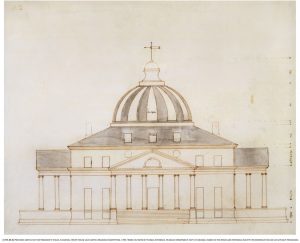
“Our lust for originality is wrecking the city, delivering a rash of formally new, but ultimately anti-urban hideous skyline baubles reducing city-making to a spectacle of super-size billboard branding gestures while inhibiting the multiplication of good ideas,” writes Phineas Harper in a recent post on Dezeen. He correctly questions the modern obsession with originality, and asks rhetorically, “Is bad originality really preferable to a brilliant copy?” Of course, it isn’t—never has been. What Harper does not mention is that copying had a long and honorable tradition in architecture. Scamozzi copied Palladio’s Villa Rotonda, so did Colen Campbell, Lord Burlington, Thomas Jefferson, and most recently Julian Bicknell in Cheshire. Some of the copies are more faithful than others (Jefferson added skylights to the dome), but all recognize that Palladio’s was a rich idea, worth exploring further. Palladio himself used motifs such as Serlianas, which were derived from others. Basing one’s work on an earlier model was partly hommage to a masterwork, and partly a recognition that true invention in architecture is rare, and that good ideas are worth repeating. One of the sins of the modernist revolution was that it undermined this tradition and actually made it dishonorable to copy earlier precedents. Ever since, architecture has been caught in a downward spiral of diminishing originality.
